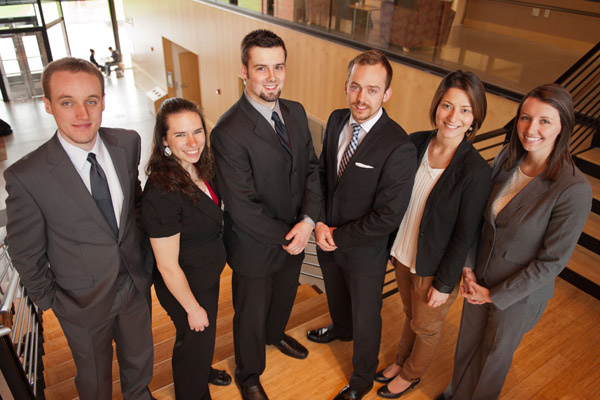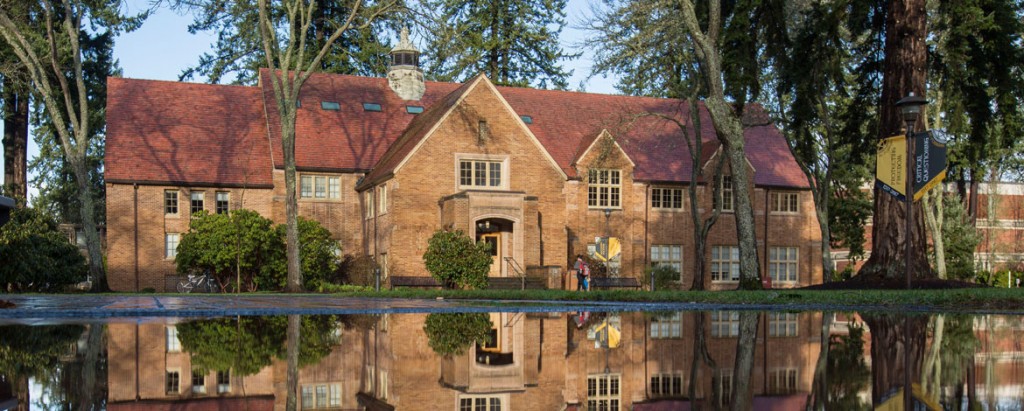Page 111 • (1,140 results in 0.048 seconds)
-

Mention Parkland, and Washingtonians tend to conjure up a slew of stereotypes and misconceptions. But to Antonio Sablan ’18 and other Pacific Lutheran University students who grew up in and around Pierce County, the area represents something much greater: home. “Parkland is resourceful. Parkland’s gritty,…
better community.” Part of that effort to give back is giving himself a public voice capable of effecting change. Sablan ran for elected office for the first time in November, challenging the incumbent for Franklin Pierce School District’s Director 5 position. While Sablan didn’t win, he drew in a little more than a third of the vote in an impressive effort.CCESWhat is CCES at PLU?PLU Center for Community Engagement and Service serves as a resource for students, staff, and faculty who want to learn
-

A diverse and dynamic artist and educator, Mare Blocker has been teaching at PLU since 2014. Her classes include Art of the Book and Typography among others. Read more about Mare in this extended interview. What is your educational background? I have a BFA in…
off and on since the early 80’s, in a variety of settings. I’ve had some career detours from teaching, like, coaching a swim team, and owning a biker bar, and being a rural librarian, and a few other wacky things. I follow my curiosity. Through it all, I have been a prolific maker, I have documented my stories and adventures. My work can be found in over 90 public collections and art museums throughout the world, including the Victoria and Albert, the Library of Congress, The Getty Research
-
Next of kin: the ethics of eating, capturing, and experimenting on great apes One of the pressing problems of our times is the future of the great apes. All of the great apes – chimpanzees, bonobos, gorillas and orangutans – are endangered. Their habitat is…
program during the summer of 1999 during a sabbatical leave, and Lindsey in the summer of 2006. During the apprenticeship program we learned how to care for captive chimpanzees and assisted with ongoing research projects. Now we continue to volunteer at the Chimposiums held at CHCI. These are educational programs that inform the public about the sign language studies this particular family of chimpanzees has been involved in as well as providing information about the plight of free-living chimpanzees
-

Six business students participated in the 2013 International Collegiate Business Strategy Competition this spring. From left to right: Zach Grah, Jordan Dahms, Cameron Holcomb, Arne-Morten Willumsen, Iren Atemad and Karrie Spencer. Photo by John Froschauer. The Real World (with a Safety Net) By Steve Hansen…
. The CFA Institute Research Challenge is a global competition in which groups of students worldwide select a small-to-midcap public company like Fischer Communications or Zillow, research it, and present their findings in a 10-page Initiation of Coverage Report. This year at the regional competition in Seattle held on February 1 – among seven universities – the PLU’s team of five students had 10 minutes to present their report to a panel of industry leaders, and then answer a 10-minute Q-and-A
-

Update on Jan. 15, 2015: PLU Contingent Faculty Withdraw Election Petition TACOMA, WA (Jan. 15, 2015)—The petition filed with the National Labor Relations Board from Pacific Lutheran University contingent faculty to form a union has been withdrawn. This means that the current union election is…
the University’s request for review with respect to both issues. On February 10, 2014, the Board issued a notice and invitation to file briefs in this case to the parties as well as the general public. The board decision can be found here. Background on PLU Contingent Faculty Unlike many universities where part-time faculty members do most of the teaching, at PLU the vast majority of student credit hours are taught by tenure-line faculty and full-time contingents with full benefits. In recent
-

By Sandy Deneau Dunham PLU Marketing & Communications TACOMA, WASH. (Jan. 26, 2015)—After World War II, government authorities removed thousands of American Indian children from their families and placed them in non-Indian foster or adoptive families. By the late 1960s, an estimated 25 to 35…
troubling nature of Indigenous child removal and the resilient spirits of those … who have worked steadfastly for the well-being of Indigenous children for decades.” Event details What: Dr. Margaret Jacobs: A Generation Removed. The 41st Annual Walter C. Schnackenberg Memorial Lecture. When: 7 p.m. Wednesday, Feb. 25. Where: Anderson University Center-Regency Room, PLU campus. Admission: Free and open to the public. More information: https://www.plu.edu/history/walter-c-schnackenberg-endowment/ About
-

TACOMA, WASH. (Oct. 17, 2016)- MediaLab at Pacific Lutheran University, the multimedia, applied research organization that celebrates 10 years of success this fall, counts more than 200 students as participants throughout the decade. Those participants are invited to mark the organization’s milestone anniversary Nov. 5…
Alaska-Canada Highway,” which premiered at the Washington State History Museum in Tacoma and ultimately was broadcast regionally by KBTC, Tacoma’s local PBS affiliate, as well as other public broadcasting member stations across the nation. “Building Connections” also received a first-place award from the National Broadcasting Society. Originally, “Building Connections” was conceived as an academic journal article, or possibly a book. The film was not an intended part of the original project. “It was
-

TACOMA, WASH. (Aug. 29, 2017)- The names of 7,500 Japanese Americans will soon be displayed at the Washington State Fair in Puyallup, just 9 miles from Pacific Lutheran University. The banners bearing the names of those interned at the Puyallup Assembly Center during World War…
chance to honor them and educate the public.”Minidoka PilgrimageVisit the Minidoka Pilgrimage website to learn more about the annual tradition.The event serves to raise awareness around the history of the fairgrounds in connection with Japanese internment during the war. The names are part of an exhibit to be hosted at the fair’s museum, and a pre-cursor to a permanent marker on the fairgrounds that will feature the same collection of names. “That’s a huge thing to be able to call attention to
-

TACOMA, WASH. (Jan. 25, 2018)— As a resident assistant in Harstad Hall at Pacific Lutheran University, Tegan Mitchell ’18 hosts events, conducts regular check-ins and is a general resource for the residents who live in her wing. “But on a daily basis I really only…
now.” Read Previous PLU to host public memorial for fallen sheriff’s deputy Read Next MediaLab explores issues of diversity with premiere of documentary series, ‘A World of Difference’ COMMENTS*Note: All comments are moderated If the comments don't appear for you, you might have ad blocker enabled or are currently browsing in a "private" window. LATEST POSTS Caitlyn Babcock ’25 wins first place in 2024 Angela Meade Vocal Competition November 7, 2024 PLU professors Ann Auman and Bridget Haden share
-

PLU mathematics professor Jessica Sklar is one of 23 collaborators creating a notable work of art, soon touring the nation. Called Mathemalchemy, the installation celebrates the beauty and creativity of mathematics. The finished piece will be about 16 x 8 feet in area and 9…
that I realized I’d been learning about Venn diagrams.” To make math more accessible for students and the general public, she explores the relationships between math and art, and math and pop culture. She even co-edited a book about the latter with her mother, Elizabeth Sklar: “Mathematics in Popular Culture: Essays on Appearances in Film, Fiction, Games, Television and Other Media.“ Last year, she taught a PLU general education math course on math in popular culture. Students were introduced to
Do you have any feedback for us? If so, feel free to use our Feedback Form.


